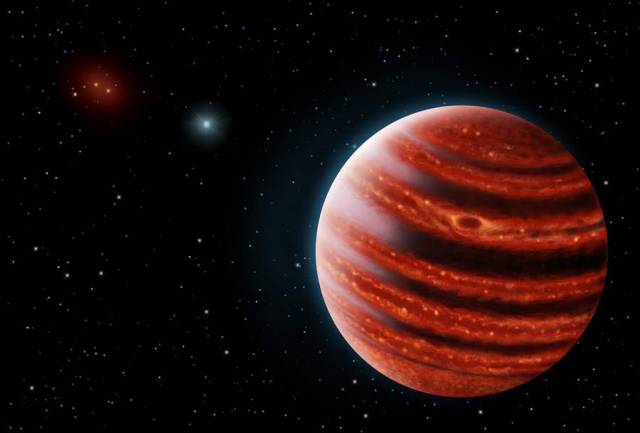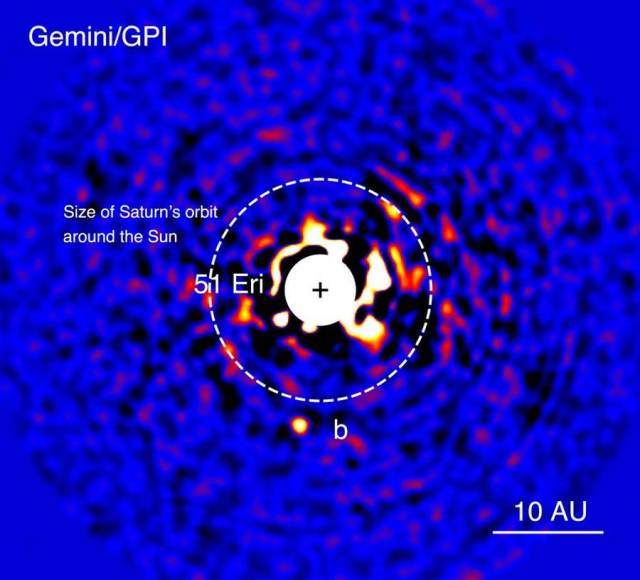By looking at younger star systems in the early stages of development, astronomers can better learn how our solar system evolved.
A team of astronomers and NASA scientists discovered a Jupiter-like exoplanet within a young star system, that could serve as a decoder ring for understanding how planets formed around our sun.
Above: Artistic conception of the Jupiter-like exoplanet 51 Eridani b, with the hot layers deep in its atmosphere glowing through the clouds. Because of its young age, this cousin of our own Jupiter is still hot and carries information on the way it was formed 20 million years ago. Credits: Danielle Futselaar and Franck Marchis, SETI Institute
The new planet, called 51 Eridani (Eri) b, is the first exoplanet discovered by the Gemini Planet Imager (GPI), a new instrument operated by an international collaboration, and installed on the 8-meter Gemini South Telescope in Chile. The GPI was designed specifically for discovering and analyzing faint, young planets orbiting bright stars via “direct imaging,” in which astronomers use adaptive optics to sharpen the image of a target star, then block out its starlight. Any remaining incoming light is then analyzed, and the brightest spots indicate a possible planet.
James Graham, professor at the University of California, Berkeley, and project scientist for GPI, said:
“This is exactly the kind of planet we envisioned discovering when we designed GPI.”
Other methods of planet detection are indirect, such as the transit method used by NASA’s Kepler mission, in which it discovers planets by measuring the loss of starlight when a planet passes in front of its star.
Discovery image of the exoplanet 51 Eridani b taken in the near-infrared light with the Gemini Planet Imager on Dec. 21, 2014. The bright central star has been mostly removed to enable the detection of the million-times fainter planet. Credits: Gemini Observatory and J. Rameau (UdeM) and C. Marois NRC Herzberg
As Bruce Macintosh, a professor of physics at Stanford University and member of the Kavli Institute for Particle Astrophysics and Cosmology figuratively described, to detect planets, Kepler sees their shadow while GPI sees their glow. He said:
“Many of the exoplanets astronomers have imaged before have atmospheres that look like very cool stars. This one looks like a planet.”
source NASA.org







Leave A Comment